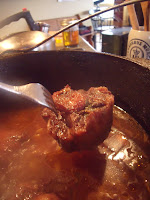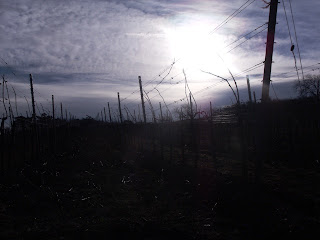I essentially stopped eating tacos from the time I left home for college up until this past year. I didn't do it consciously; it was just that it wasn't on my radar of favorite foods to prepare, nor was it ever an appealing entree choice when I ate out.
Last year, when I started to spend more and more time with my now fiance, Peter, we would often share memories of foods and meals that tugged at our stomachstrings. I learned of the dill pita chips his grandmother's maid would prepare for their lunches on the eastern shores of Maryland, and of the "ginger peachy skyscrapers" he enjoyed in seconds and thirds.
Eventually the subject of tacos came around, and Peter quickly drew my intrigue in the direction of the Baja-inspired soft-shell variety of taco layered with fish, cabbage, and crema. I knew I had to try them.
My first tacos probably probably made their way to our dinner table in April or May of last year. Since then, we have been eating them more or less weekly, with each iteration different from the last, and the majority of them fish.
Thanks to a rejuvenating beach vacation, during which we gorged ourselves on all things seafood - ceviche, stone crab legs, oysters, conch fritters, etc... - I ended this week inspired to try my refreshed hand at fish tacos. I took a cue from the mediocre tacos we tried seaside, and came home with just over a half pound of Mahi-Mahi. I have always stuck to pan-frying or having Peter grill the fish, I chose this time to go all out and beer-batter and deep-fry the fish. I created the batter with The Paupered Chef's ratio of 1 cup of flour to two teaspoons of salt to 1 beer. I used a can of beer, but hesitated to dump the whole thing into the flour and salt combo. I stopped with about two tablespoons of beer left in the can, which gave me the "goopy" consistency required.
Setting the batter aside, I got to work on rolling out my flour tortillas. Usually the store-bought tortillas work and taste just fine for our purposes, but with time and inspiration aplenty, I was happy to use the Simple Tortilla recipe from the King Arthur Flour website to create my own freshly-made taco shells.
With those cooked and staying warm in a low oven, I proceeded with a marinated cabbage topping using green cabbage, cilantro, lime juice, and touches of sugar and salt.
I then whipped a little bit of sour cream and lime juice together for the creamy component typical of most fish tacos.
I don't really like working with hot oil - the scars on my hands are a testament to that - so I only poured enough oil to come a couple inches up the side of my deep Dutch-oven. I then cut the fish into 1 to 2-inch wide fingers, dunked them into my ready-and-waiting batter, and gently placed them into the hot oil. I let them cook for about two minutes on one side, then flipped them with a spatula, leaving them for another 2 minutes before removing them to a paper-towel-lined plate.
The tacos went down quickly and easily, and while they were worthy of every last bite, I commented (and Peter saw what I meant) that there was a missing flavor component. Perhaps too much acid cutting into the fattiness and tenderness of the fish. Perhaps not enough crema. Perhaps I'll just have to try again next week...






















.jpg)



































